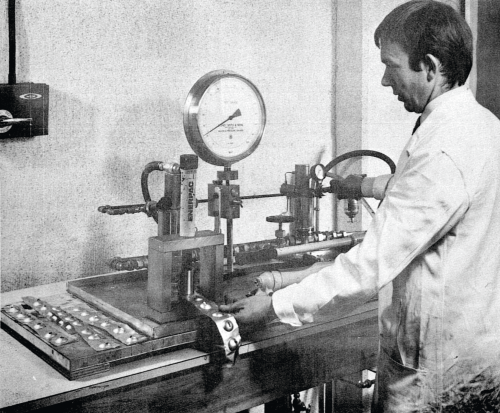Before the merger in 2020, each of our two manufacturing facilities were separate companies, each with their own, unique histories.
Through their stories, both locations have developed a distinct identity and character. As a joint company, we recognize and celebrate our differences and similarities. Embracing the unique strengths and perspectives of everybody, regardless of where they are located, adds strength to our brand and enables us to deliver higher performance at a global level. Read the unique histories of our two manufacturing facilities below.

Elfab’s history (North Shields, UK)
The place? North Shields, near Newcastle upon Tyne in the UK.
The date? 1965.
Elfab was originally formed as a subsidiary of Torday Ltd, a metal finishing and plating business in North Shields. Named the Electrofabrication & Engineering Company Limited, the company initially produced nickel foil using a process known as electroforming. However, the company's director, John Torday, soon recognized the potential of using this foil to produce bursting discs, and from 1967 onward rupture disc manufacturing became the company’s core focus.
During the 1970s, the company purchased a local rupture disc manufacturing division called FA Hughes Ltd. As a result of this acquisition, the company was renamed Elfab Hughes.
Elfab Hughes' first reverse acting rupture disc – the RK76 – hit the market in 1976. The innovative disc featured a unique leading edge blade design and anti-fragmentation ring, and differed significantly from other disc designs at the time. Further innovations included the RK80 welded disc assembly in 1980 and the reusable Flo-Tel burst sensor, which was developed in the 1990s and is still the only burst sensor of its kind today.
In 1993 the company was acquired by Halma plc and subsequently shortened its name to simply Elfab. Elfab began working alongside Oseco in the early 2000s, and both companies rebranded to show their linked identities.
Art, History, and Engineering
Laszlo Torday was not only a renowned physical chemist, he was also an accomplished amateur photographer. His photos of North Shields, Jesmond and Newcastle in the 1960s and 1970s are now part of the local heritage collection in Newcastle City Library. You can view nearly 1,000 of his photos online in the Flickr album Torday’s Newcastle.
Laszlo’s grandson, Paul Torday, joined the business as a director. Paul eventually retired and wrote the best-selling novel and film inspiration Salmon Fishing in the Yemen.

